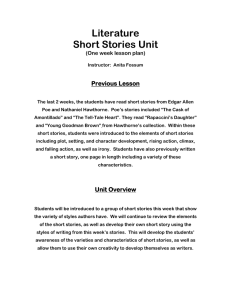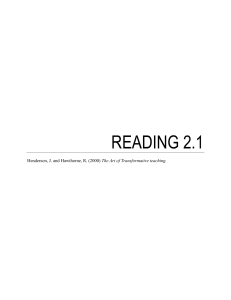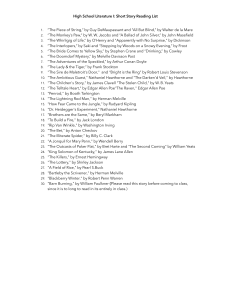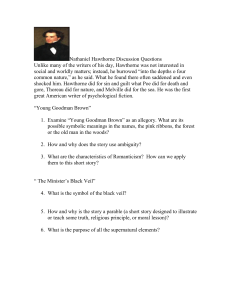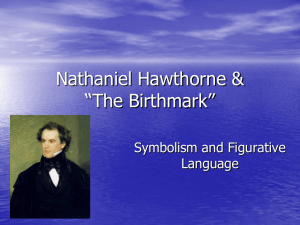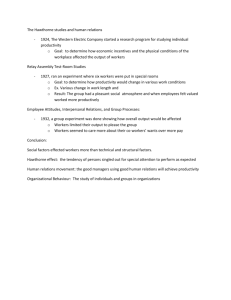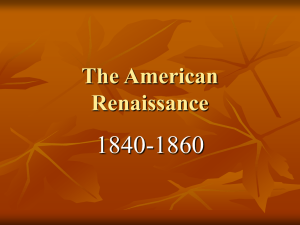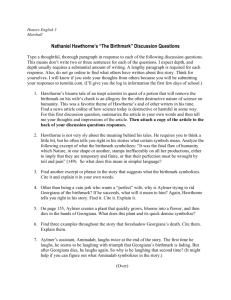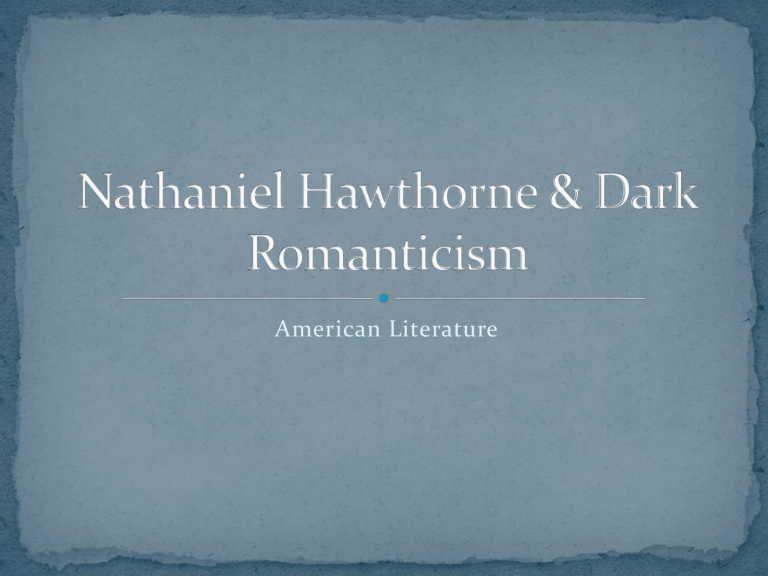
American Literature Nathaniel Hawthorne (born Nathaniel Hathorne); was an American novelist and short story writer. He was born in Salem, Massachusetts and critical of Puritanism He changed his last name so he would be disassociated with relatives who participated in the Salem Witch Trials Hawthorne wrote several notable novels and short stories. The Scarlet Letter (most famous novel) “The Birthmark” published in 1846 “The Minister’s Black-Veil” “Young Goodman Brown” Much of Hawthorne's writing is set in/near New England Many works are moral allegories with a Puritan inspiration. His fiction works are considered dark romanticism He is known for developing characters who show deep psychological complexity His stories suggest that guilt, sin, and evil are the most inherent natural qualities of humanity. His works are “cautionary tales” presenting strong moral messages in order to turn us from our sinful nature He often depicts the past to express themes of ancestral sin, guilt, and retribution. Statue of Hawthorne in Salem, Massachusetts. AMERICAN LITERATURE Dark Romanticism is a reaction to the American Transcendentalism movement. Dark Romanticismcan be considered antitranscendental Authors considered most representative of dark romanticism are Edgar Allan Poe, Nathaniel Hawthorne, Herman Melville, and poet Emily Dickinson Dark Romantics are much less confident about the notion of perfection as an innate quality of mankind, as believed by Transcendentalists. Dark Romantics present individuals as prone to sin and self-destruction, not as inherently possessing of divinity and wisdom. Both T and DR believe Nature is a deeply spiritual force BUT, Dark Romanticism views nature in a sinister light Transcendentalism views nature as a divine and a universal mediator. To DR, the natural world is dark, decaying, and mysterious; when it does reveal truth to man, its revelations are evil Ts advocate social reform when needed, but works of DR show humans failing in their attempts to make changes for the better “Tell-Tale Heart" by Poe "The Birth-Mark" by Hawthorne "The Minister's Black Veil" by Hawthorne Moby-Dick by Melville Bartleby the Scrivener" by Melville The Fall of the House of Usher" by Poe "The Raven" by Poe What is our society’s definition of beauty? Is this ideal attainable? How do we as “common people” try to attain this beauty? Are there individuals who meet this standard of beauty? Who and why? What is your own personal standard of beauty and/or perfection? When Aylmer tells Georgiana about his dream, how does she react? 2. Upon making the joint decision to remove Georgiana’s birthmark, what does Aylmer begin to do and spend his time on? 3. How is the birthmark removed? 4. What ends up happening to Georgiana at the end of the story? 1.
